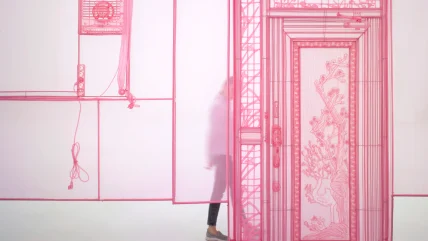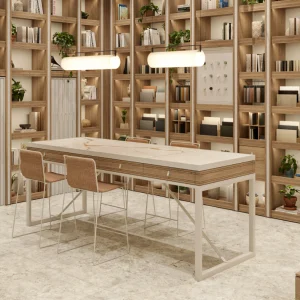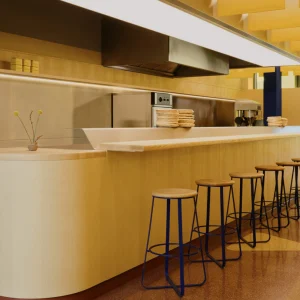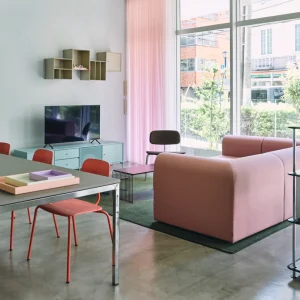
Tate Modern is presenting a landmark exhibition of Do Ho Suh’s practice, marking the first major solo showing of his work in London for a generation.
The artist invites visitors to explore his large-scale installations, sculptures, videos and drawings, asking questions about home, memory, identity and how we move through and inhabit the world around us. The exhibition surveys the breadth and depth of Suh’s practice over the past three decades, spanning locations including Seoul, New York and London – the three cities he has called home, and featuring new site-specific works on display for the first time.
The exhibition’s title Walk the House is drawn from a Korean expression Suh heard during the construction of his childhood home in Seoul referring to the hanok – a traditional Korean house that could be disassembled, transported and reassembled at a new site, a process imagined as ‘walking the house’. Reflecting this idea of a transportable home, Suh’s immersive works examine the relationship between architecture, the body and memory, as well as how we carry multiple places with us across space and time. The artist has stated: ‘The space I’m interested in is not only a physical one, but an intangible, metaphorical, and psychological one. For me, ‘space’ is that which encompasses everything.’
Suh welcomes viewers to fill his works both physically with their presence and psychologically with their inner worlds, inviting visitors to walk through his fabric architectures – translucent 1:1 scale replicas of spaces in which he has lived and worked.
Alongside expansive installations, the exhibition brings together works on paper created between 1999 and 2025, which allow Suh to create portable versions of built environments.
Tate Modern also presents two of Suh’s video works – Robin Hood Gardens 2018 and Dong In Apartments 2022 – which focus on 20th-century housing blocks in London and Daegu ahead of their demolition.
The exhibition culminates in a space dedicated to Suh’s ongoing Bridge Project – an interrogation of an impossible ‘perfect home’. Created in collaboration with specialists in architecture, engineering, anthropology and biology, it grapples with how an imagined, hypothetical set of structures intersect with real-world social, political and ecological issues.





